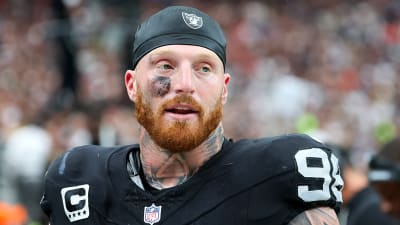
Mavericks won’t thrive with Cooper Flagg as their point guard
Cooper Flagg’s first NBA night offered a dose of reality for the Dallas Mavericks. The No. 1 pick logged a double-double but struggled to organize an offense. The San Antonio Spurs pounced, and the gap between “future star” and “primary initiator” showed up immediately.
Flagg finished with 10 points, 10 rebounds, no assists, one steal and three turnovers on 4-of-13 shooting, with a minus-29, as Dallas fell 125–92 to the Spurs. He was scoreless in the first half. San Antonio rode a 40-point, 15-rebound masterpiece from Victor Wembanyama, while Dallas shot just 37.3% and never found a rhythm.
The wrong role at the wrong time
This isn’t an indictment of Flagg’s talent; it’s an indictment of the assignment. With Kyrie Irving still rehabbing and not expected back until early 2026, Dallas asked an 18-year-old winger to mimic a veteran point guard’s job against a top defense. That’s a big ask on any night — brutal on opening night.
Flagg’s tools flashed in spurts — defensive activity, the downhill burst — but the Spurs pressed the weak spots. They met him early, switched length onto the ball and baited late reads. The result was exactly the profile you’d expect from a gifted rookie thrown into lead-guard duty: empty-calorie touches, tough pull-ups late in the clock and turnovers when pressured.
Meanwhile, Wembanyama erased angles, turned drives into detours and tilted possessions before they started. Dallas couldn’t steady the ship even with Anthony Davis scoring 22 points amid foul trouble; the structure around Flagg just wasn’t there.
The lesson is simple: Flagg’s pathway to early impact is as a connector, not a conductor. He’s built to attack closeouts, move the ball on the second action, crash the glass and guard multiple spots. Asking him to bring it up, read the chessboard and dictate pace against set defenses is a developmental detour.
How Dallas should recalibrate Cooper Flagg’s runway
With a player like Flagg, the temptation is to accelerate the timeline. The smarter play is to frame his usage to what translates now. That means pairing him with a steady initiator, running him off handoffs and off-ball cuts, and letting him be the finisher more than the starter.
The Mavericks also need a short-term plan for half-court structure until Irving returns. That can be as basic as simplifying the menu — early actions through the five, more Spain pick-and-roll with a guard handling and Flagg screening or lifting, and scripted ATOs that get him advantage touches at the elbow. It’s not about hiding him but stacking reps that build functional confidence.
None of this changes the big picture. Flagg’s motor, length and feel are real, and the box score double-double wasn’t an accident. But the opener clarified that “point Flagg” is a project for down the road, not the present. Dallas tried to skip steps and San Antonio — behind a historic Wembanyama night — made them pay.
Dallas will look different when its guard room is healthy; the job then is to keep Flagg in lanes where he can add value without carrying creation load. If they do that, the rookie will settle in and the rough edges from Night 1 will look like what they were: just a tough assignment against an elite defense. For now, the takeaway is clear — the Mavericks won’t thrive with Flagg at point guard, and that’s okay. Let him grow into his all-around wing role.
More must-reads:
- Grading Cooper Flagg's NBA debut
- Is it already time to abandon the Cooper Flagg point guard experiment?
- The 'NBA No. 1 draft pick and Rookie of the Year' quiz
Breaking News
Trending News
Customize Your Newsletter
 +
+
Get the latest news and rumors, customized to your favorite sports and teams. Emailed daily. Always free!








